Have you ever wondered how you would function on a daily basis without solid restorative sleep every night with possibly a few dreams mixed in to make things more interesting? Imagine what it must be like to not even have eyelids to cover those totally drained eyes at the end of a long and arduous day.
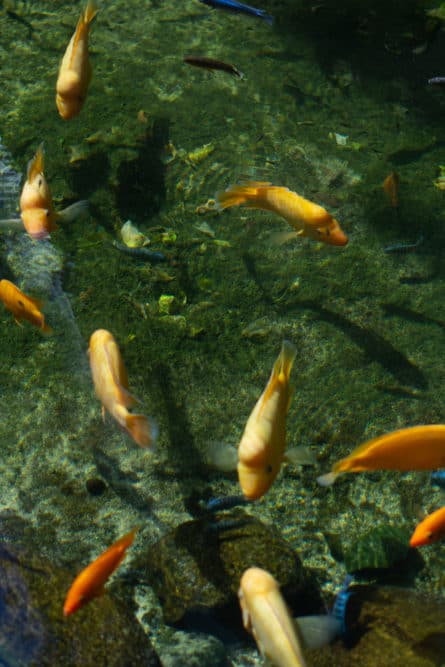
Luckily, not every species requires the same kind of rest as humans and other mammals do. Koi fish, which are members of the carp family, is one such example. Their sleep pattern does not correlate to sleep as we humans know it to be, but could better be described as intermittent periods of "deep rest"...and, no, these aquatic vertebrates do not have eyelids!
The middle or bottom of the koi pond is the most likely place to spot a sleeping koi fish for several different reasons. First and foremost is the threat of predators, such as raccoons and herons, as well as hawks and owls, and even snakes. They would most certainly be considered quality food for these hungry animals so, as a result, koi fish typically sleep grouped together as there is something to be said about safety in numbers.
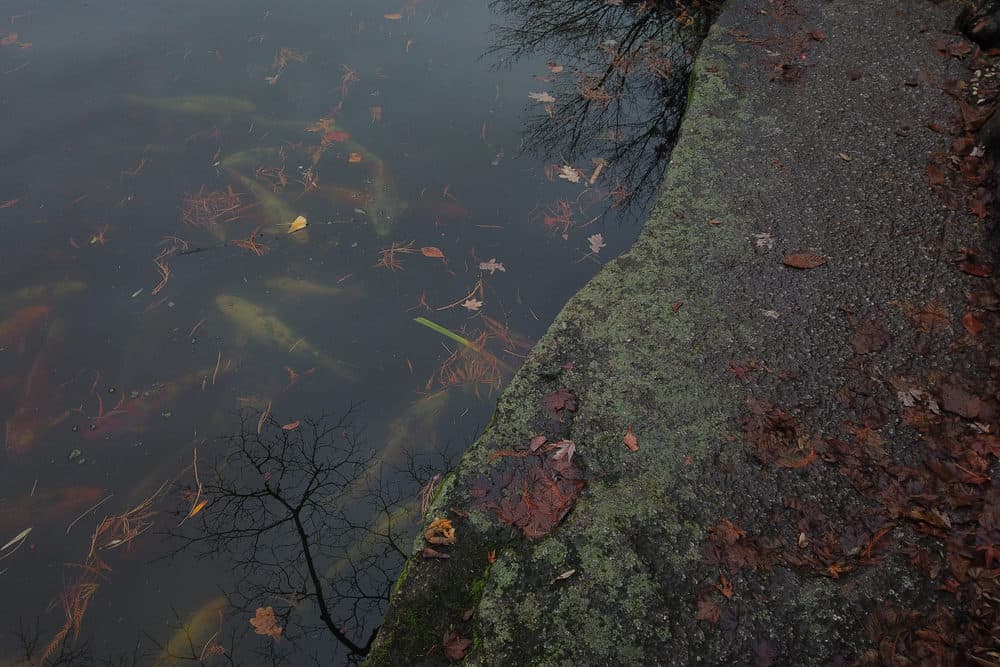
Another reason is that it is essential for these fish to float in oxygen-rich water which is more prevalent further below the surface. Darkness is not a necessary or desired environment as koi carp can just as easily find a nice shady spot in the pond to rest unless, of course, there is a plentiful supply of bugs to eat (desired koi food!). That would be reason enough to delay any potential sleep.
Koi fish sleep upright with their eyes open while floating in one spot. They are typically busier, or one could say more active, during the daylight hours. If you happen to spot a koi fish that is motionless on its side, that is not a good sign. It could mean they are either dead, seriously ill or perhaps lethargic due to poor pond health or water quality or, even worse, lack of adequate oxygen levels.
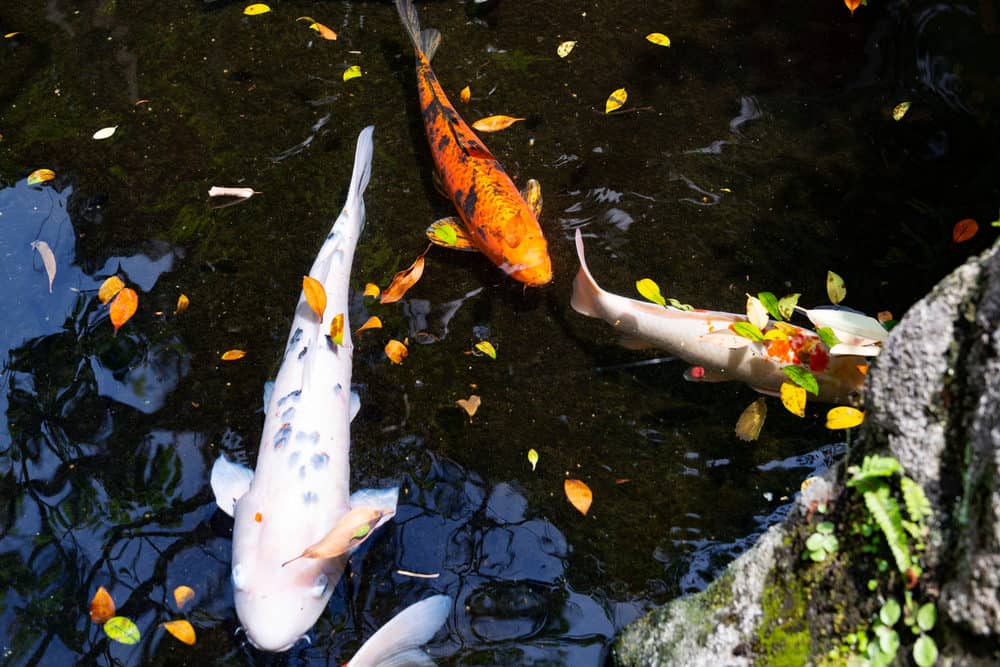
Pond water quality and water temperature can play a huge and crucial role in the health and well being of all fish species. If proper care is not taken and clean water not provided then it can result in stressed koi or dead or sick fish due to harmful bacteria. Therefore, pond water parameters should never be located in direct sunlight in order to prevent harmful algae growth as a rule for a healthy pond.

This species of carp has been known to succumb to a disease called Carp Adema Virus, which is also known as "Koi Sleepy Disease". An infectious disorder, symptoms include extreme lethargy, sunken eyes, swollen gills, loss of appetite, difficulty breathing and sometimes death. The virus is spread by contact between infected fish through mucus secretions from the mouth and nose. Symptoms usually appear within two weeks after infection.
Treatment involves removing all affected fish from the pond, placing them in quarantine, and treating them with antibiotics until recovery occurs. This condition is therefore a MUCH different and more dangerous scenario than a koi fish that is motionless and resting upright.
It is known that koi do not eat if the temperature of the pond is less than 50 degrees Fahrenheit so, along with a reduced breathing rate, they can sometimes be mistaken for a dead fish by someone not familiar with their winter behavior patterns. Koi fish are cold-blooded creatures, thus warmer water is required to increase their metabolic rate and body temperature and also stimulate their appetite. Their bodies basically respond to the temperature of the water in which they reside.
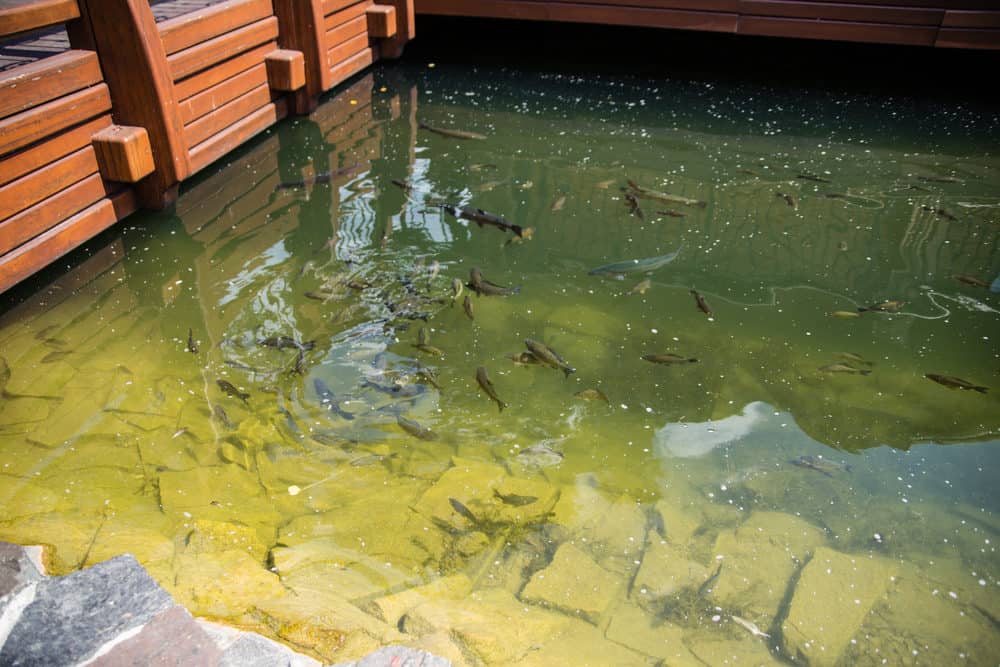
Cold winter temperatures promote a process of semi-hibernation, called torpor, in which the pond fish retreat to the bottom, away from predators, and engage in periods of rest as they endure the cold snap. Koi will remain fairly motionless throughout this type of hibernation period except to move ever so slightly in order to prevent frozen joints.
One more important thing to note here is that while their activity level diminishes during the cold winter months, so does their immune system. Once the temperature of the pond increases again, koi fish are more susceptible to bacteria which can cause illness or death.
While sleep or periods of rest are necessary for rejuvenation for all animals, it is clear that koi fish certainly don't sleep 7-9 hours a night like a human adult requires, or 17-19 hours a day as a human newborn requires. Just as an interesting side note, African elephants typically only need 2 hours of solid sleep per day. The amount of sleep varies depending on the species and biological makeup, brain size, diet and body index.
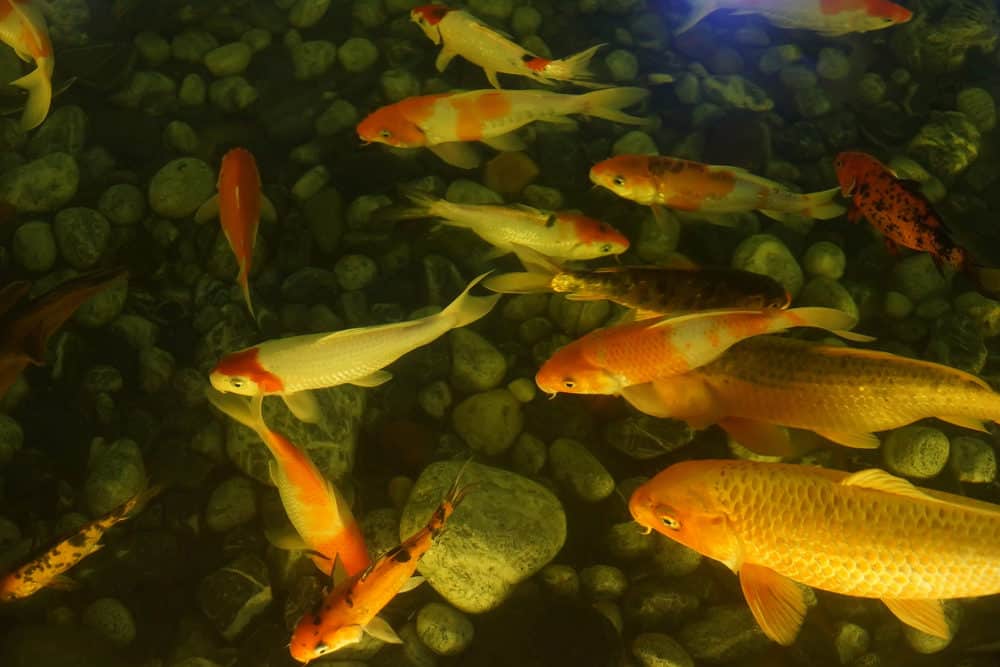
An inadequate amount of restful sleep for humans, as well as many in the animal world, can lead to a variety of health issues such as weight loss and infections which can potentially become fatal. Sleep that is determined to be "adequate" most certainly is very different when comparing human sleep to that of koi fish.
So, koi fish do indeed "sleep" but it may seem more like our version of "resting". Realizing and becoming familiar with this style of sleep will enable it to be easier to determine, based on their body language and appearance, whether they are in a healthy state of inactivity or whether they are in distress with an illness or bacterial infection.



